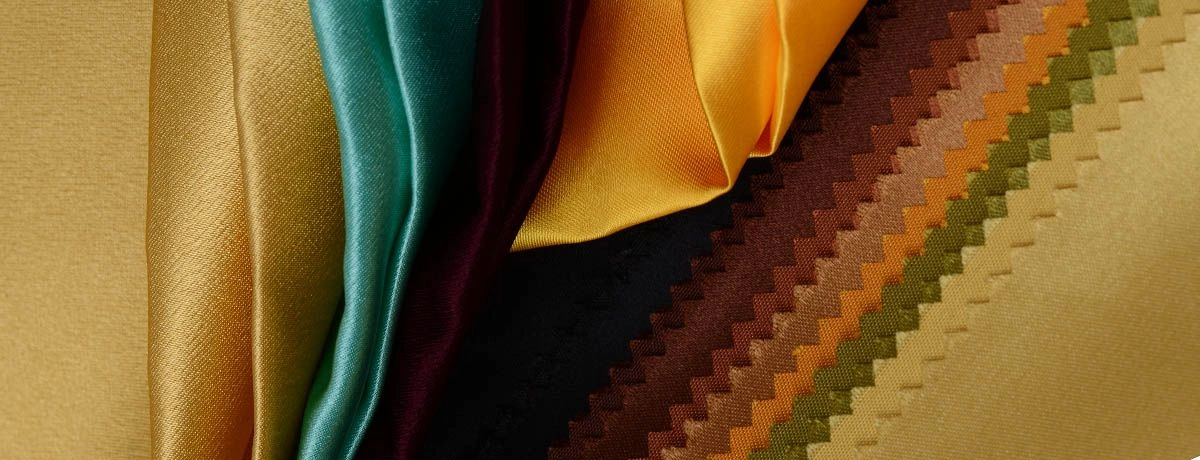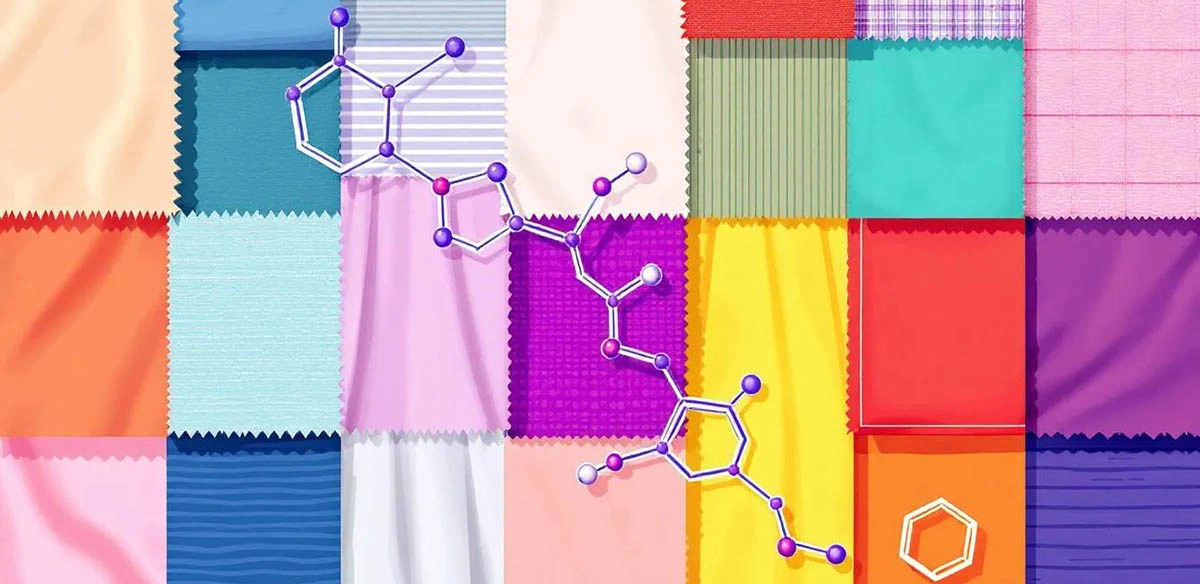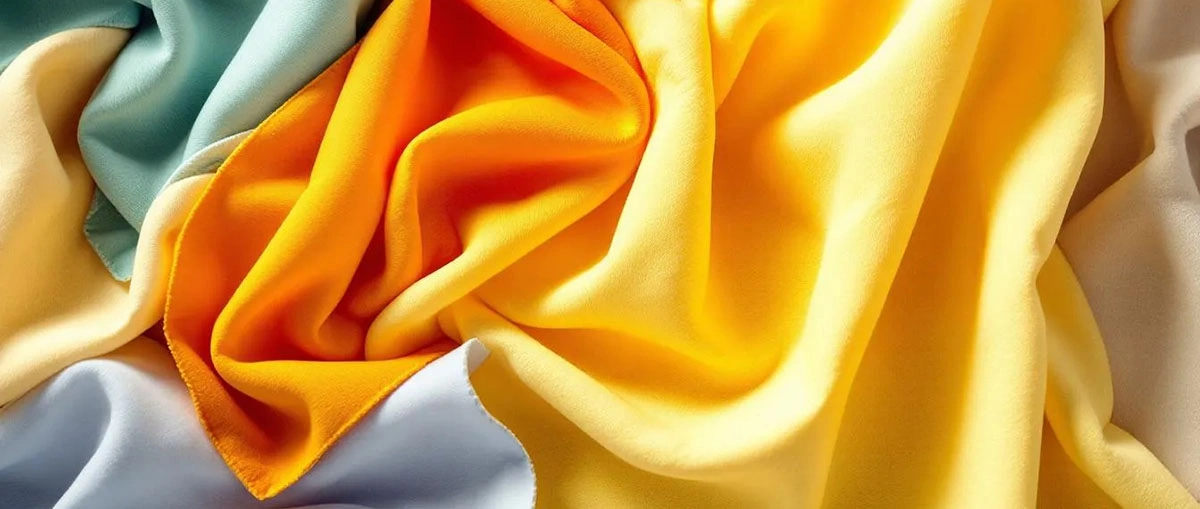Understanding What Fabric is Polyester: A Complete Overview

Polyester fabric is a synthetic material made from petroleum-based chemicals. This fabric is known for its strength, light weight, and versatility. In this article, we’ll explore what fabric is polyester, including its types, uses, and environmental effects.
Key Takeaways
-
Polyester is a synthetic fiber, primarily derived from petroleum, known for its durability, lightweight nature, and water resistance, making it ideal for various applications.
-
There are three main types of polyester fabrics: Polyethylene Terephthalate (PET), PCDT polyester, and plant-based polyester, each with distinct characteristics and uses.
-
While polyester offers advantages such as cost-effectiveness and low maintenance, it also raises environmental concerns due to pollution during production and the release of microplastics.
Defining Polyester Fabric

Polyester is a synthetic fiber derived from petroleum-based chemicals, marking its origin from the 1920s when research on polyester began. In the 1970s, its popularity soared in apparel manufacturing due to its versatility and unique properties. Unlike natural fibers, polyester fiber is entirely man-made, which allows for greater control over its characteristics and applications. Additionally, synthetic fabric provides a wide range of options for consumers, including various synthetic materials.
Notably, polyester is celebrated for its:
-
durability
-
lightweight nature
-
water resistance
-
shape retention
These attributes make it an ideal choice for clothing production and other applications where longevity and resilience are paramount, offering several advantages.
With more than half of global fiber production consisting of polyester, its economic significance in the textile industry is undeniable. However, it’s crucial to note that traditional polyester relies heavily on petroleum-based products, including crude oil, with no natural raw materials involved. Additionally, the use of synthetic fibres in the production process further emphasizes the reliance on these materials.
Types of Polyester Fabrics
The world of polyester fabrics is diverse, with three major types dominating the market: Polyethylene Terephthalate (PET), PCDT polyester, and plant-based polyester. Each type offers distinct characteristics and applications, making polyester a versatile option across various industries.
MH offers a wide range of polyester fabrics, including Oxford fabric, taffeta, satin, interlock, pongee fabric, and mesh fabric, available in dyed, printed, or coated finishes.
Polyethylene Terephthalate (PET)
Polyethylene Terephthalate (PET) is the most common type of polyester fabric, renowned for its durability and cost-effectiveness. Created from the combination of ethylene and p-xylene, PET is a product of sophisticated chemical engineering. This type of polyester is widely used in various applications, from clothing to food containers and water bottles, due to its robust nature and affordability.
The production process of PET involves mixing ethylene glycol with purified terephthalic acid, forming a polymer that can be spun into fibers or molded into plastic reinforcements. This versatility in production makes PET an indispensable material in both textile and industrial sectors.
PCDT Polyester
PCDT, or poly-1,4-cyclohexylene-dimethylene terephthalate, offers a unique chemical structure that sets it apart from PET. Known for its superior elasticity and durability, PCDT polyester is particularly suitable for heavy-duty applications such as curtains and upholstery. Its ability to withstand wear and tear makes it a preferred choice for items that require long-lasting performance, including those made with dimethyl terephthalate and various chemicals.
PCDT polyester, developed by the DuPont Corporation, offers higher resilience and flexibility, catering to industries requiring robust materials. Despite being less common than PET, its specific properties make it invaluable for certain applications.
Plant-Based Polyester
Plant-based polyester represents an eco-friendly alternative to traditional polyester types. Its characteristics include:
-
Higher production cost compared to PET and PCDT
-
Less durability than PET and PCDT
-
Made from natural fibers, reducing reliance on petroleum-based raw materials
-
Offers significant environmental benefits
However, the higher production costs and lower durability have limited its popularity compared to traditional polyester. Despite these challenges, plant-based polyester remains a promising option for those seeking sustainable materials in their products.
Uses and Applications of Polyester Fabrics

The versatility of polyester fabrics has led to their widespread use across various sectors. From apparel and fashion to home textiles and industrial applications, polyester’s unique properties make it a valuable material. Its popularity surged in the 1970s due to its low cost and ease of care, further solidifying its position in the global market.
Today, polyester accounts for a high percentage of global fiber production, showcasing its prevalence and impact. MH specializes in woven and knitted polyester fabrics used for garments, uniforms, bags, linings, home textiles, industrial applications, polyester yarns, polyester yarn, and polyester filament, serving manufacturers, importers, and distributors worldwide.
Apparel and Fashion
Polyester fabrics have become a staple in fashion due to their durability and versatility. Often used as an alternative to cotton, polyester is found in various clothing items like shirts, pants, and suits. Its tear-resistance enhances its durability, making it suitable for high-wear environments. Additionally, many polyester fabrics are treated to be stain-resistant, which facilitates easier maintenance and care.
Polyester can also be engineered for moisture-wicking properties, enhancing comfort during physical activities. Special treatments like these make polyester clothing not only durable but also comfortable and practical for everyday wear.
Home Textiles
Polyester’s lightweight nature makes it an excellent choice for home textiles such as curtains. Its ability to be tinted in various colors adds to its appeal in home furnishings, allowing for a wide range of design possibilities. Polyester is commonly used in items like:
-
Curtains
-
Pillows
-
Bed linens due to its desirable characteristics, including:
-
Ease of maintenance
-
Durability
These attributes make polyester a valuable material in home decor, providing both functionality and aesthetic flexibility. Its use in home textiles underscores its versatility and widespread acceptance in various applications.
Industrial Applications
In industrial applications, polyester stands out for its strength and versatility. Safety belts, for example, are made from polyester textiles due to their excellent tensile strength and durability. Additionally, polyester fibers are used in tire manufacturing as reinforcement, enhancing the performance and longevity of tires.
Polyester’s robustness makes it suitable for various industrial applications, providing reliable performance in demanding environments. Its wide range of uses in the industrial sector highlights its importance and adaptability.
Advantages and Disadvantages of Polyester
Polyester fabrics offer a range of advantages and disadvantages, making them a subject of both praise and criticism. Known for their durability, polyester fabrics, especially PCDT polyester, provide better resistance to wear and tear compared to other types. Polyester is also cost-effective, making it accessible for both manufacturers and consumers.
However, its lower breathability compared to natural fibers like cotton can impact comfort in high temperatures.
Benefits of Polyester
Polyester is celebrated for:
-
Its durability and shape retention, making it a preferred choice in various applications.
-
Its dimensionally stable nature, ensuring it maintains its shape even after repeated use.
-
Excellent moisture resistance, helping it resist water absorption.
Cost is another significant advantage, with raw polyester fibers costing about $1 per pound and finished fabric priced at approximately $10 per yard. This affordability contributes to its widespread use and popularity in various textile applications. Moreover, polyester fabrics are low maintenance, resisting wrinkling and shrinking, which simplifies care for consumers.
When blended with cotton, polyester improves the overall durability and reduces issues like shrinkage and wrinkles.
Drawbacks of Polyester
Despite its many benefits, polyester is often criticized for its poor breathability, which can lead to discomfort in warm conditions. This lack of breathability makes it less suitable for hot climates, where natural fibers like cotton are preferred. Additionally, polyester can generate static electricity, making garments clingy and uncomfortable to wear.
Environmental concerns also arise from polyester production, including pollution and resource usage. The reliance on fossil fuels and the release of harmful toxins during production contribute to its negative environmental impact. These drawbacks highlight the need for more sustainable alternatives and practices in the textile industry.
Comparing Polyester with Other Fabrics
Polyester stands out in the textile industry due to its durability and low cost, making it a popular choice for both clothing and industrial applications. When blended with natural fibers, polyester enhances comfort and reduces creasing. However, polyester is often perceived as less comfortable against the skin compared to natural fabrics, which can affect its overall wearability.
Comparing polyester to other fabrics, such as cotton and nylon, reveals distinct differences:
-
Cotton: has a natural feel and breathability, preferred in hot climates.
-
Polyester: has moisture-wicking abilities, making it suitable for athletic wear.
-
Nylon: offers greater durability and resistance to wear, particularly in high-stress applications.
Acrylic, known for its softness and warmth, may lack the moisture-wicking properties that polyester provides. Modern fabric engineering has improved polyester’s breathability, expanding its use in various applications.
Wholesale Order
MH serves polyester fabric wholesalers, importers, and garment factories in over 150 countries, offering custom colors, coatings, lamination, and finishing options. As a professional wholesale supplier established in 1999, MH specializes in woven and knitted polyester fabrics used for garments, uniforms, bags, linings, home textiles, and industrial applications with dyes.
With competitive factory prices and a strong production capacity, MH ensures reliable and consistent quality for bulk orders. MH’s global shipping and professional export services make it a trusted partner in the textile industry.
Summary
In summary, polyester fabric has revolutionized the textile industry with its versatility, durability, and cost-effectiveness. From its origins in the 1920s to its widespread use in various applications today, polyester continues to be a key material in clothing, home textiles, and industrial products,. The different types of polyester fabrics, including PET, PCDT, and plant-based polyester, each offer unique characteristics and uses, catering to diverse needs and preferences.
While polyester offers numerous benefits, such as low cost, durability, and ease of maintenance, it also has drawbacks, including lower breathability and environmental concerns,. Efforts to recycle polyester and develop sustainable alternatives are crucial for mitigating its environmental impact and promoting a more sustainable textile industry. As we move forward, the continued innovation and responsible production of polyester fabrics will play a vital role in shaping the future of textiles.
Frequently Asked Questions
What are the main types of polyester fabrics?
The main types of polyester fabrics are Polyethylene Terephthalate (PET), PCDT polyester, and plant-based polyester. Each type offers distinct properties suitable for various applications in textiles.
Why is polyester popular in the textile industry?
Polyester's popularity in the textile industry stems from its durability, low cost, water resistance, and ability to retain shape, making it ideal for diverse applications. This combination of qualities makes polyester a preferred choice for manufacturers and consumers alike.
What are the environmental concerns associated with polyester?
The environmental concerns associated with polyester include pollution during its production, the release of microplastics into ecosystems, and its reliance on fossil fuels, all of which significantly impact the environment.
How does polyester compare to other fabrics like cotton and nylon?
Polyester is a durable and cost-effective fabric, although it is less breathable than cotton. Compared to nylon, polyester has superior moisture-wicking properties but is not as resilient to wear.
Can polyester be recycled?
Yes, polyester can be recycled, primarily into recycled polyester, which is sourced from used PET bottles and packaging, thus contributing to environmental sustainability.
Contact MH
MH offers polyester fabrics. Please contact us for more details or inquiries. We're here to help!


